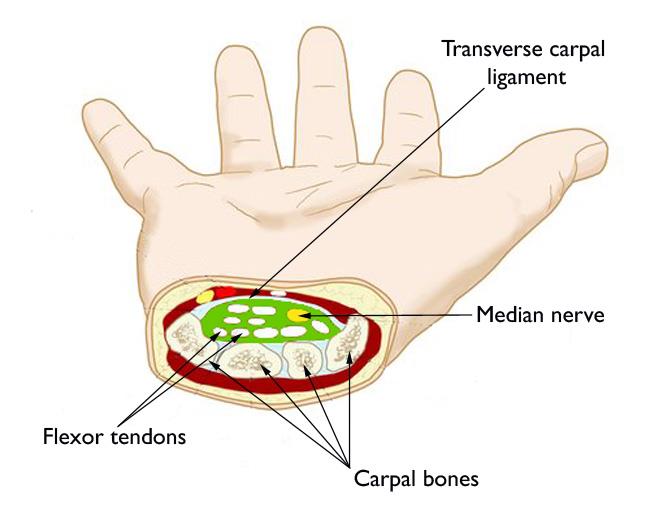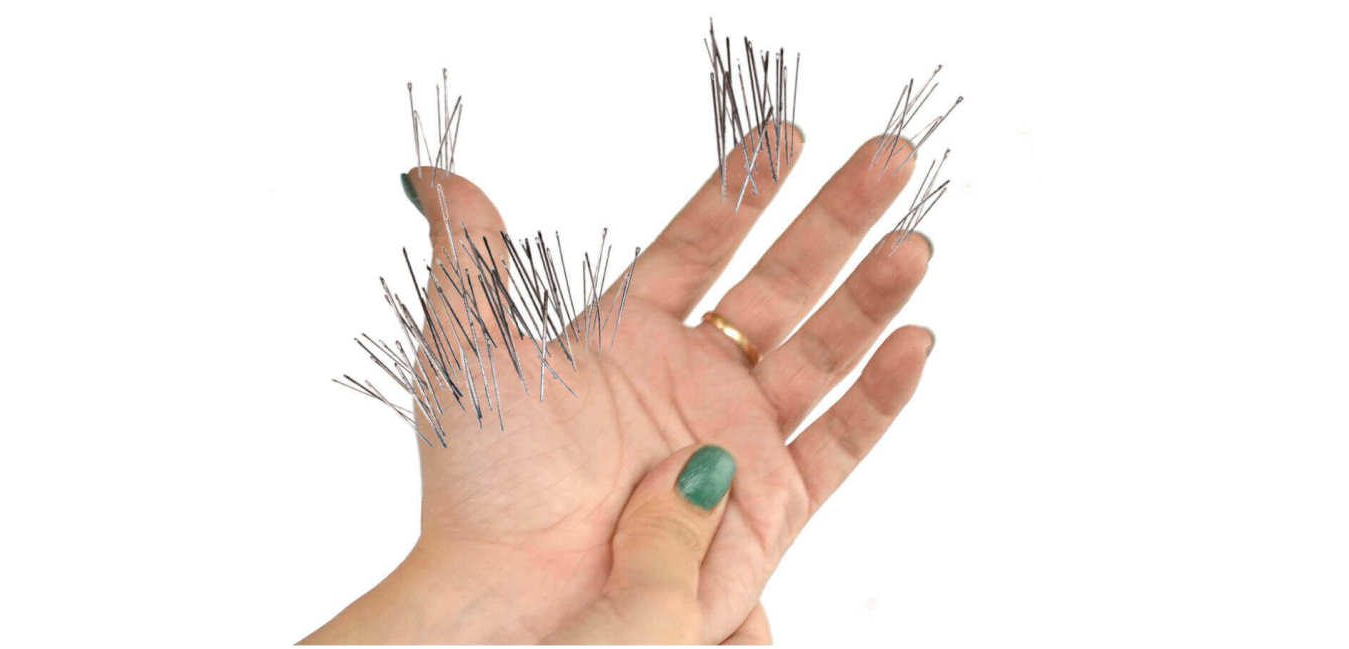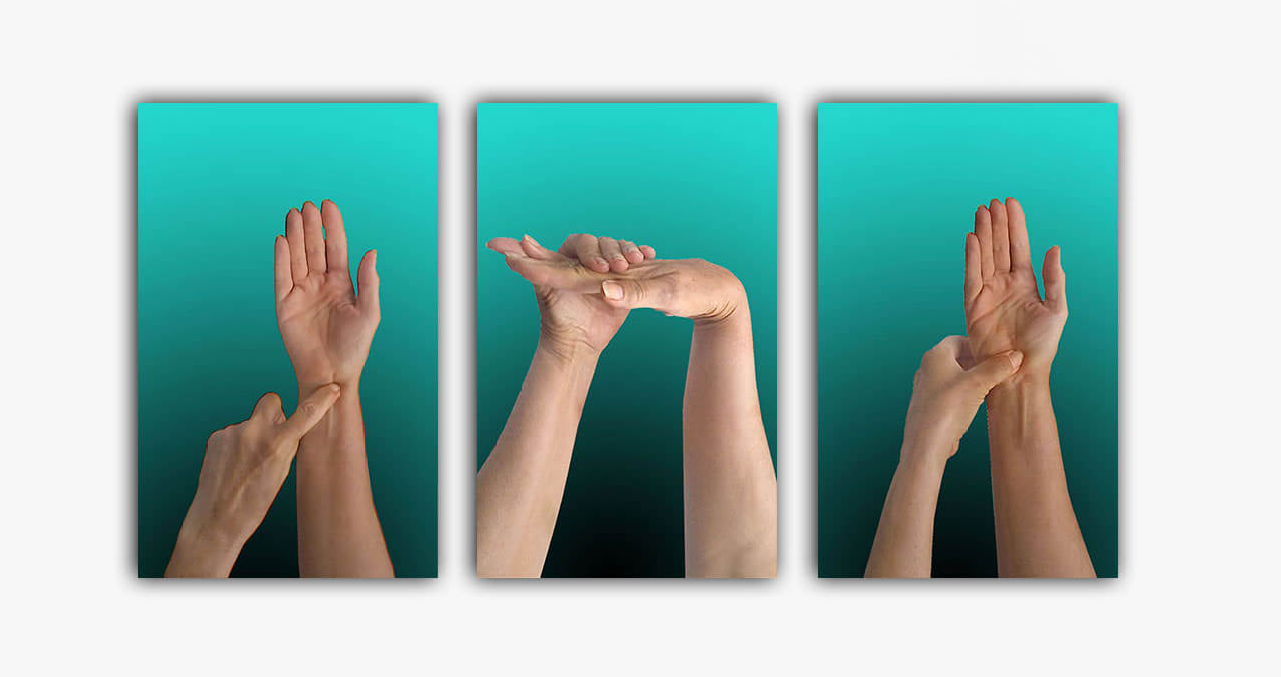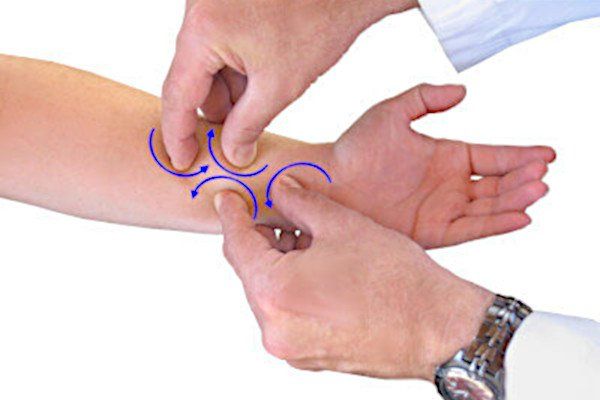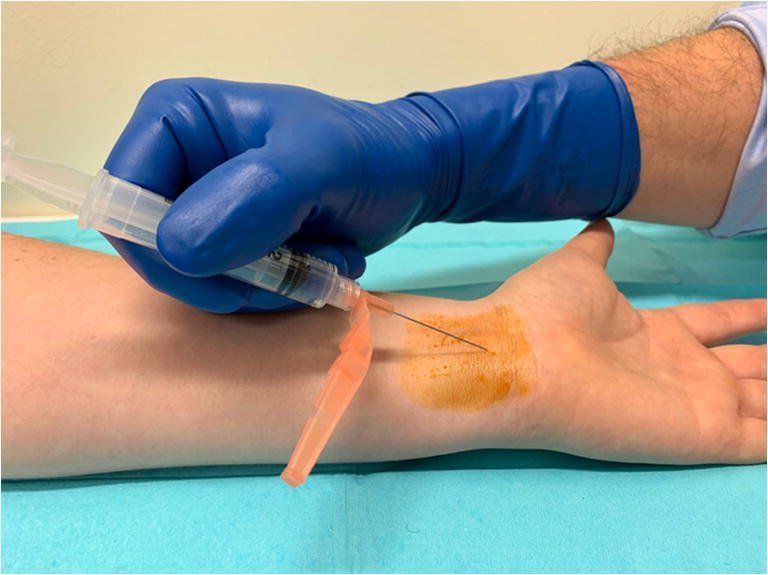Guide to Carpal Tunnel Treatment
Nearly every patient asks me if there's an effective carpal tunnel treatment without having surgery. And it's a good question because who wants
carpal tunnel surgery if they don't need it?
Happily, the answer to the question is a big,
"Yes - there are very effective remedies." But let’s first find out more about this common disorder of the hand.
But first, what
causes
carpal tunnel syndrome?
If you have the painful disorder known as
carpal tunnel syndrome then you’re not alone. Over 5 million Americans have it. Moreover, a quarter million people get a
diagnosis of carpal tunnel syndrome every single year.
I'm convinced each one of those patients wonder if they need surgery.
The underlying
cause of carpal tunnel syndrome is the result of a "pinched nerve" inside your wrist joint. The pinching is in a space or passageway technically called the "carpal tunnel". Hence the name of the disorder.
In this space your
flexor tendons (responsible for curling your flingers) and
median nerve (a main nerve of the hand) run together. As you can see in the illustration below, this is a very tight space where the tendons and nerve are touching.
Sometimes these tendons get irritated and start to swell. But the carpal tunnel space is very small - not a good place for swelling. So as the tendons swell, they push on the median nerve adjacent to them. In time, the swelling exerts more and more pressure on the nerve.
As a result of this pressure the nerve gets pinched or squeezed. That's what causes all of the
carpal tunnel symptoms in your fingers and hand.
The median nerve can also be pinched by dislocating your wrist joint or breaking a wrist bone. It also happens with arthritis, thyroid disease, and diabetes.
Also,
pregnant women usually suffer from carpal tunnel symptoms. That's because of fluid retention and fluid build-up which happens inside the wrist joint. The fluid build-up produces pressure which pushes on the median nerve.
Most pregnant women desperately seek advice about
carpal tunnel in pregnancy because of this. They mainly look for a
safe
carpal tunnel treatment without surgery so that their baby isn't harmed.
Signs of carpal tunnel syndrome
The main
signs and symptoms of carpal tunnel syndrome are
numbness, tingling (pins & needles),
pain, and weak pinch or
grip strength. Patients also report hand clumsiness and a tendency to drop things.
The numbness, tingling and pain most often happen in the thumb, index, middle and ring fingers. It does not appear in the little finger (pinky finger). The sensations are confined mostly to the palm side of the hand, up to and including the fingertips.
In the beginning, you most often feel these symptoms during the night while trying to sleep. As symptoms worsen, they keep you awake more and more. You often feel the need to shake out numb hands.
As it advances, carpal tunnel symptoms begin to appear during daily activities like while
driving, picking up coins, holding a phone to your ear or reading a newspaper. Sometimes you feel electric shocks shooting from your hand into your wrist or arm.
In
severe carpal
tunnel syndrome (usually when it's left untreated) the loss of strength in your hand is catastrophic. Also, you usually lose more sensations in your fingers, which may be permanent. With severe carpal tunnel, you will likely lose the feeling of hot and cold temperatures in your fingers, which is a key sign of severe progression.
How doctors diagnose carpal tunnel syndrome
Before your
doctor recommends a carpal tunnel treatment, he or she will be sure of the
diagnosis. The doctor will take your detailed history including other medical conditions. The doctor will also assess how you use your hands regularly, your
job activities, and any prior hand or arm injuries you had. Then the doctor will perform simple tests right in the office.
In fact, you can do these tests on yourself. These
self-tests for carpal tunnel are called “provocative tests”. That’s because the doctor tries to temporarily
provoke symptoms or make them worse. They induce the
Phalen ,
Tinel , and
Durkan tests.
As shown in the illustration below, each test involves simple bending or applied pressure to the hand and wrist.
These provocative tests are
very accurate
for diagnosing carpal tunnel syndrome.
Sometimes the doctor will also take X-rays to rule out arthritis or a bone fracture. Less frequently, the doctor uses electrodiagnostic studies (called
EMG testing ). These were once popular to confirm the initial diagnosis. They also check for other problems with your nerves. However, the EMG test is
not as accurate as the other tests, and is rarely used today.
Non-surgical carpal tunnel treatments
The
American Academy of Orthopedic Surgeons (AAOS) recommends using non-surgical methods to relieve carpal tunnel symptoms. In fact, the AAOS recommends trying
all non-surgical options
to cure symptoms before ever considering surgery.
A non-surgical carpal tunnel treatment can include the options listed below. Usually it's best to employ two or more of these options simultaneously.
Rest
Night bracing
Stretching exercises
Myofascial release massage
Steroid shots
When all non-surgical treatments fail
If you tried every carpal tunnel treatment available but didn't have success, then surgery may be needed. The surgeon's goal is to cut the
ligament in your wrist joint that holds the bones together. Doing so lets the carpal tunnel "snap open" to create more room inside. Doing so relieves pressure on the median nerve.
After surgery, there's usually
pain around the stitched area. This can last for a few weeks to months. Moreover, it
’s worth noting that carpal tunnel symptoms may not go away after surgery.
That’s especially true in cases of severe carpal tunnel syndrome.
The success rate of carpal tunnel surgery varies because it all depends on how "success” is defined. Doctors report a 55-85% success rate of carpal tunnel surgery. But doctors define success as "recovery without complications".
In contrast, patients report a
50% success rate. That's because patients define success as “satisfaction with my results at 2 years”.
Conclusion
Non-surgical carpal tunnel treatment is actually the
primary way most patients and therapists relieve symptoms. Surgery is only the last resort when other non-surgical remedies fail. Non-surgical treatments like rest, night bracing, stretching exercises, and myofascial release massage (especially in combination) usually work quite effectively for most patients. You should try these before ever considering hand surgery.


